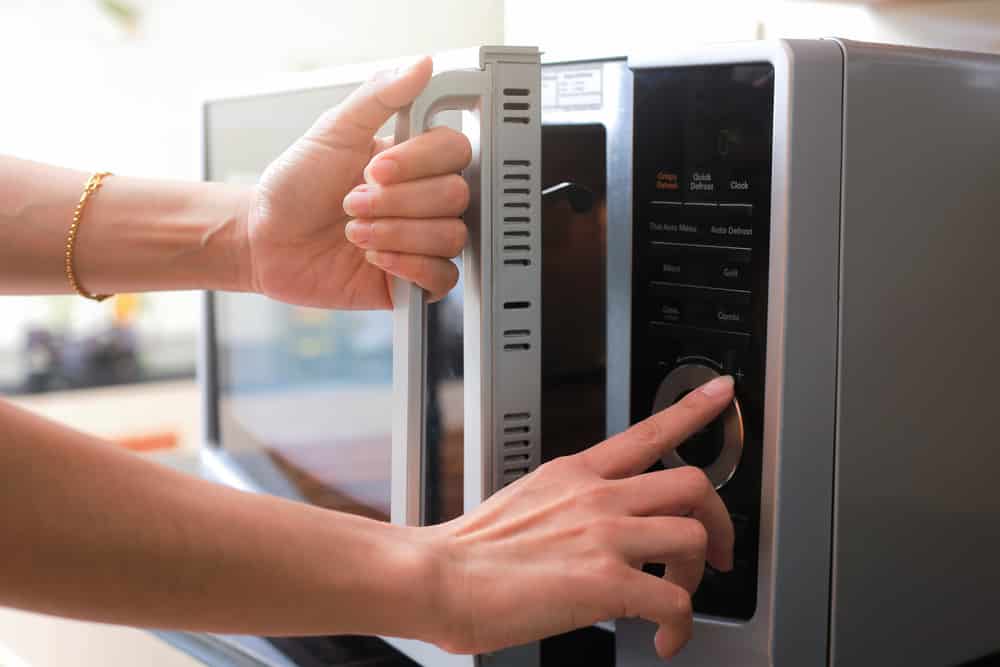
A microwave oven has become the most used kitchen appliance in every home as it’s perfect for warming up pasta, soup, and other dishes. For this reason, people opt for Thermador as this brand has high-end microwave ovens available with innovative features, even heating, and multiple power levels. However, there are multiple Thermador microwave problems that every user should know about. So, let’s have a look at the common microwave problems and solutions!
Thermador Microwave Problems
1. The Plate Is Not Turning
The turning plate has been integrated into the microwave that moves to make sure the food is evenly cooked and warmed up. The plate has to support the food while ensuring even cooking from all sides. When the plate fails to turn, it can hinder the cooking and warming experience. So, if your microwave’s plate has stopped turning, you have to inspect the guide-rollers added under the plate. That’s because the plate fails to turn when these rollers are damaged or come off. In either case, the guide-rollers should be replaced.
If there is nothing wrong with the guide-rollers, you have to check the pronged coupler in the Thermador microwave to make sure it’s not cracked. You can inspect it by taking out the back panel, and if the coupler seems burnt or cracked, it has to be replaced.
2. Microwave Is Not Turning On
The microwave will be rendered useless if it fails to turn on or when it doesn’t respond to the power button. There are various reasons that can cause the power failure of the microwave. First of all, you must check the wall plug and make sure the power cord of the microwave is tightly connected to the power outlet. In addition to this, you should check the door switch as well as the door latch assembly because the damaged components can restrict the functionality.
So, if the wall plug is alright, you have to ensure that the microwave door is closing properly. If the door doesn’t close, the door switch and latch have to be replaced. Last but not least, you must inspect the ceramic fuse and thermal fuse and replace them if they seem damaged.
3. Microwave’s Door Is Not Closing
If the microwave oven’s door is not closing tightly or is hanging, you have to check the springs and hinges because they often come loose. When the door fails to close, the heat will escape from the microwave, which hinders the cooking and warming processes. So, check the springs and hinges to tighten them up. In case you don’t know how to inspect the springs and hinges, call the technician to tighten them up for you.
4. Door Is Stuck Closed
If you have put food in the microwave and the door is stuck closed, it’s likely that the door latch assembly is stuck. To be honest, the only solution is to force-open the door and get the latch assembly replaced. Ideally, you should hire a certified technician to open the microwave door to make sure you don’t damage something in the process.
5. Microwave Is Not Shutting Off
Once you are done cooking and warming the food, it’s evident that you have to shut off the microwave. However, if it doesn’t shut off, the food will be overcooked or get burnt. In such instances, it’s recommended that you take out the wall plug to disconnect it from the power connection. Once the microwave is shut off, you have to hire an electrician to take a look at internal components and smartboard to get timely repairs and parts replacement.
6. Improper Heating
Improper heating is usually caused when you have been using the microwave for a long time. So, if you turn on the microwave and it doesn’t heat up properly, you must ensure that the microwave door is properly closed to make sure the heat is retained. On the other hand, if the door is already closed, you must check the voltage diode to ensure it’s not brunt – the burnt diode has to be replaced.
7. Weird Noises
When you turn on the microwave oven, and it starts making weird noises, it’s likely that you have put the microwave on an uneven surface – such placement leads to the rattling of the internal components, hence the noise. So, make sure the microwave is placed on an even surface.
